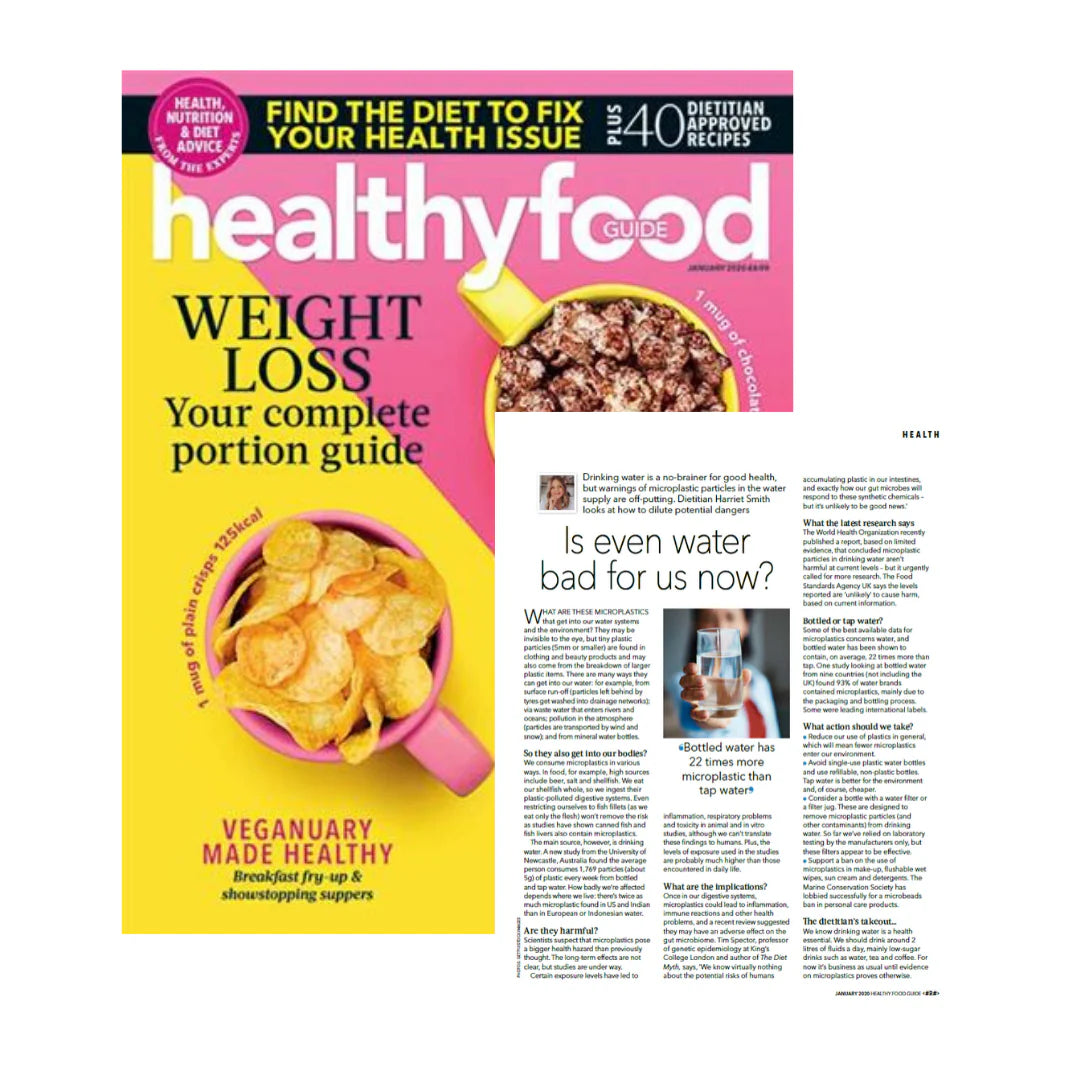We all know that drinking water is a no-brainer for good health, but warnings of microplastic particles in the water supply are off-putting. We collaborated with dietitian Harriet Smith to look at how to address the potential dangers in an article for the Healthy Food Guide.
What are microplastics?
Microplastics may be invisible to the eye, but the tiny plastic particles, 5mm or smaller, are found in clothing and beauty products and may also come from the breakdown of larger plastic items. Sadly, these microplastics can then enter our water through surface run-off, via wastewater that enters rivers and oceans, pollution in the atmosphere transported by wind and snow and from mineral water bottles.
How do microplastics enter our bodies?
We consume microplastics in various ways. In food, for example, high sources of microplastics are commonly found in beer, salt, and shellfish. However, the main source is drinking water. A new study from the University of Newcastle, Australia, found the average person consumes 1,769 particles (about 5g) of plastic every week from bottled and tap water. How badly we're affected depends on where we live: there's twice as much microplastic found in the US and India as in European or Indonesian water.
Are microplastics harmful?
Scientists suspect that microplastics pose a bigger health hazard than previously thought. The long-term effects are not clear, but studies are underway.
Tim Spector, professor of genetic epidemiology at King's College London and author of The Diet Myth, says, 'We know virtually nothing about the potential risks of humans accumulating plastic in our intestines, and exactly how our gut microbes will respond to these synthetic chemicals - but it's unlikely to be good news.'
How can we take action against microplastics?
To avoid consuming microplastics through drinking water, we advise using a Doulton® water filter system. Our systems are designed to remove microplastic particles (and other contaminants) from drinking water.
Other ways that you can take action against microplastic consumption are as follows:
- Reduce our use of plastics in general, which will mean fewer microplastics enter our environment.
- Avoid single-use plastic water bottles and use refillable, non-plastic bottles. Tap water is better for the environment and, of course, cheaper.
- Consider a bottle with a water filter or a water filter system in your home or office space. These are designed to remove microplastic particles (and other contaminants) from drinking water. So far, we've relied on laboratory testing by the manufacturers only, but these filters appear to be effective.
- Support a ban on the use of microplastics in make-up, flushable wet wipes, sun cream, and detergents. The Marine Conservation Society has lobbied successfully for a microbeads ban in personal care products.
Take control with a Doulton® water filter
A Doulton® water filter can remove plastic microparticles down to 0.5 microns, giving you peace of mind about what is in the water you drink. Despite the widespread news coverage of plastic pollution, 2019 also saw the revelation that plastic production is still set to double in the next 20 years.
Make the Doulton® difference and reduce single-use plastic.
Have a say on what is in your water by using a Doulton® water filter and play your part in cutting single-use plastic by choosing tap water.






